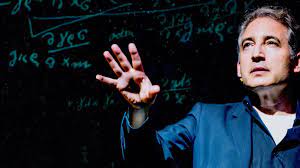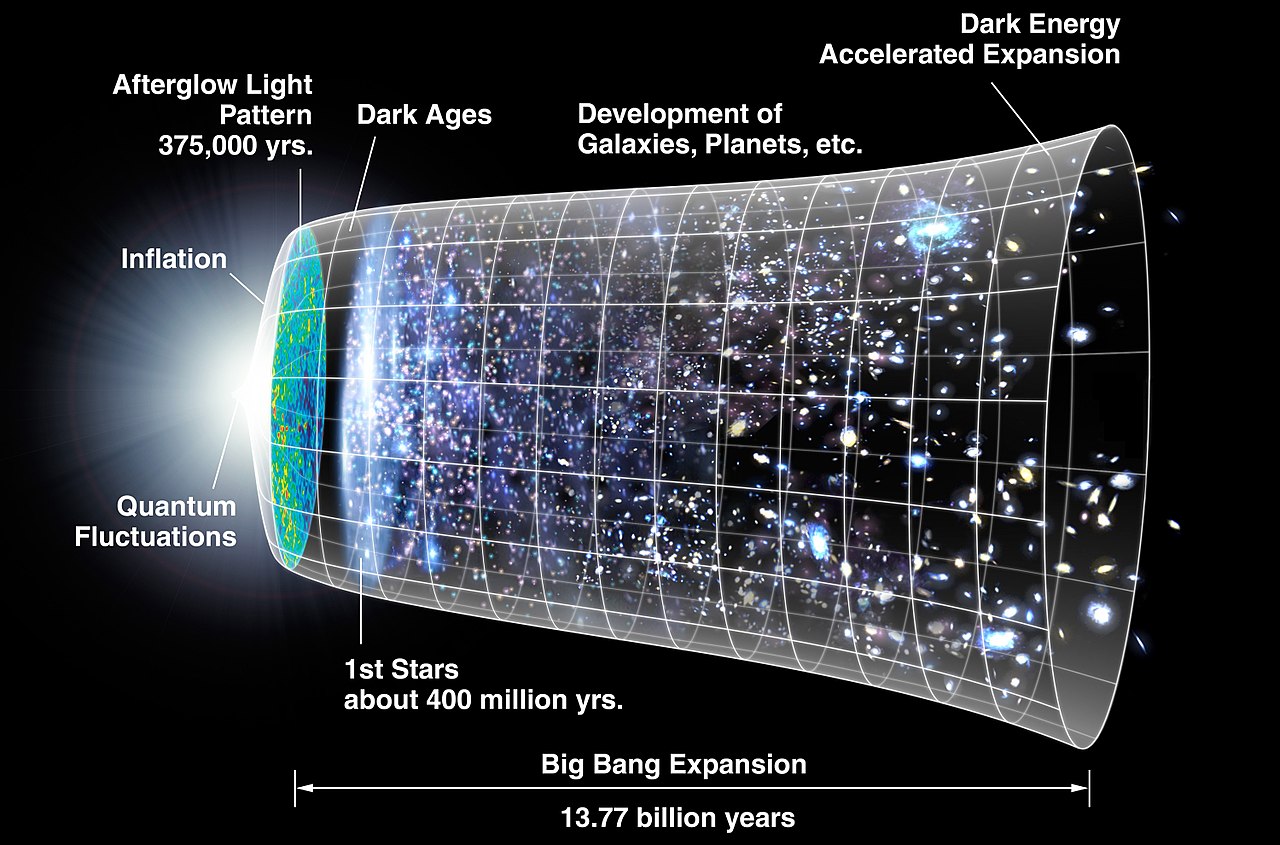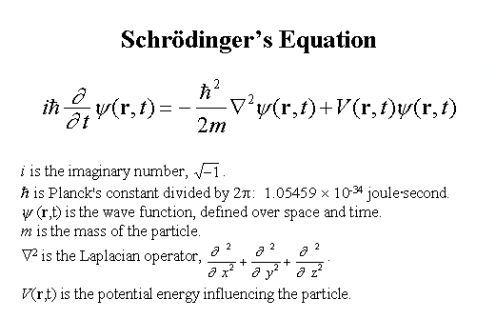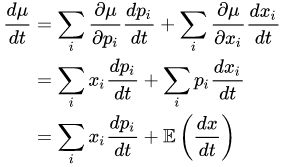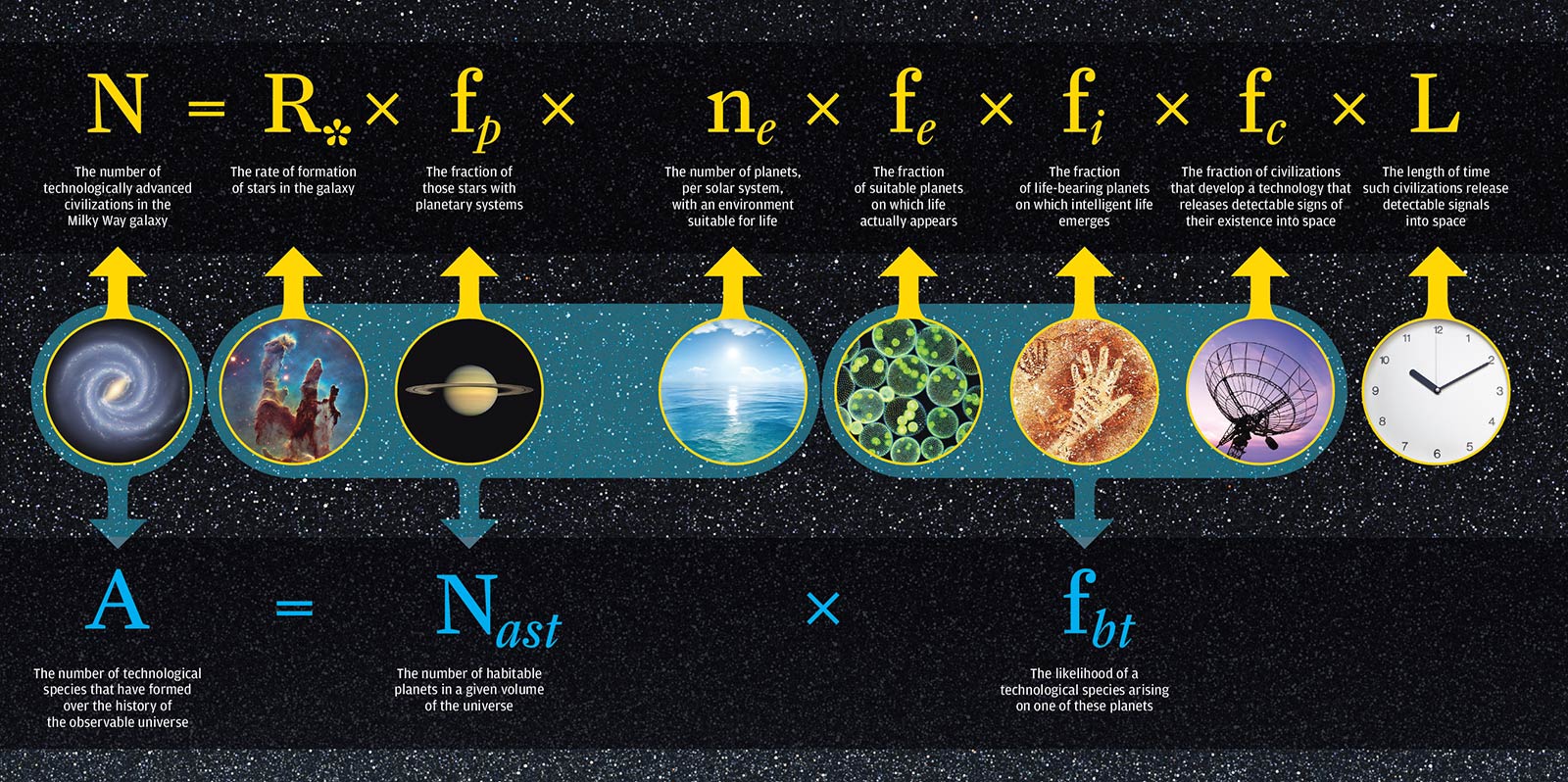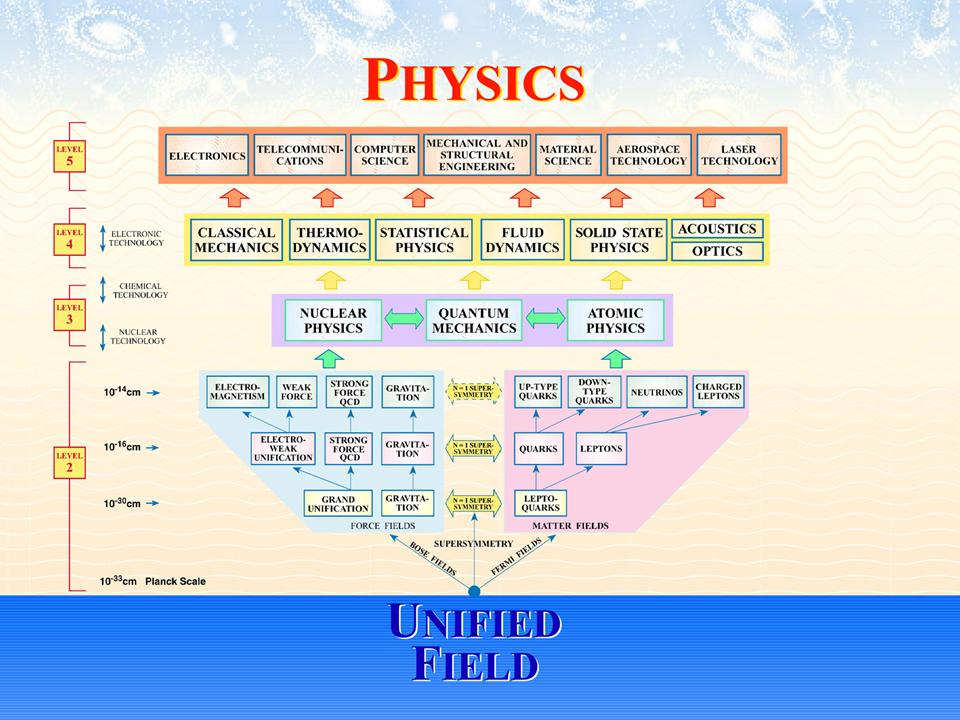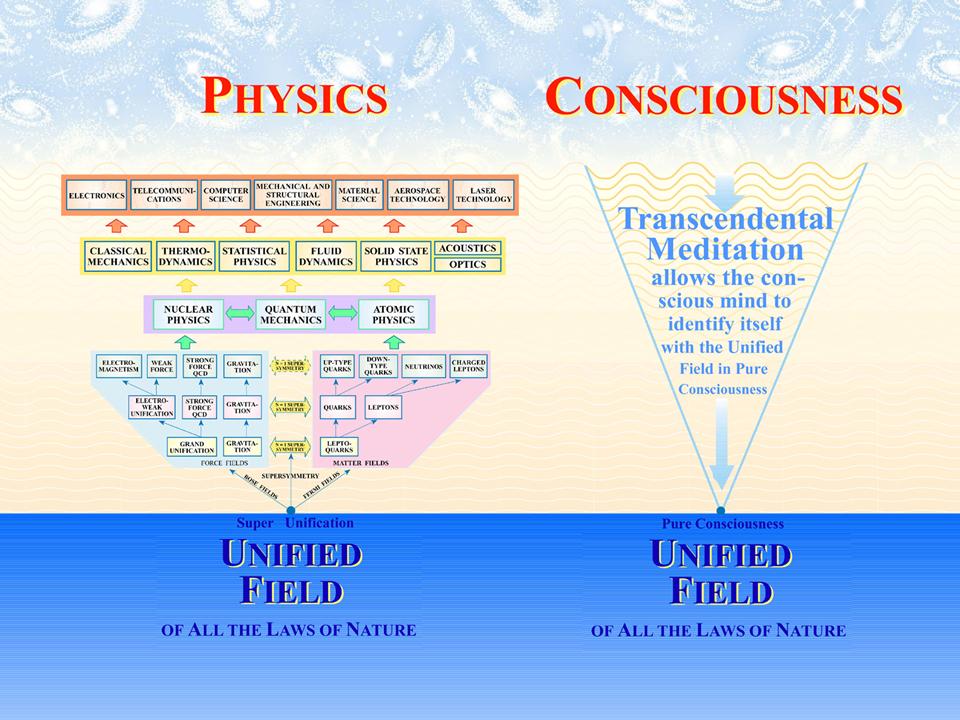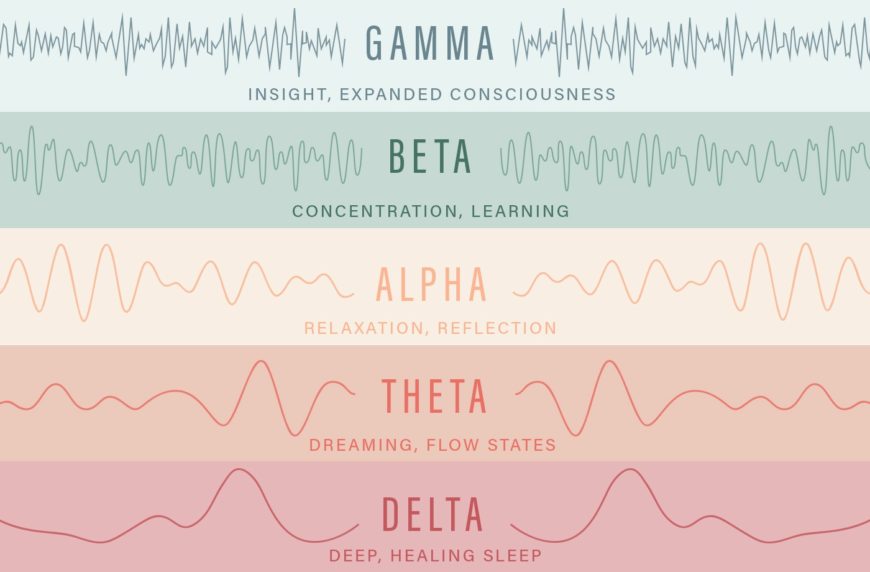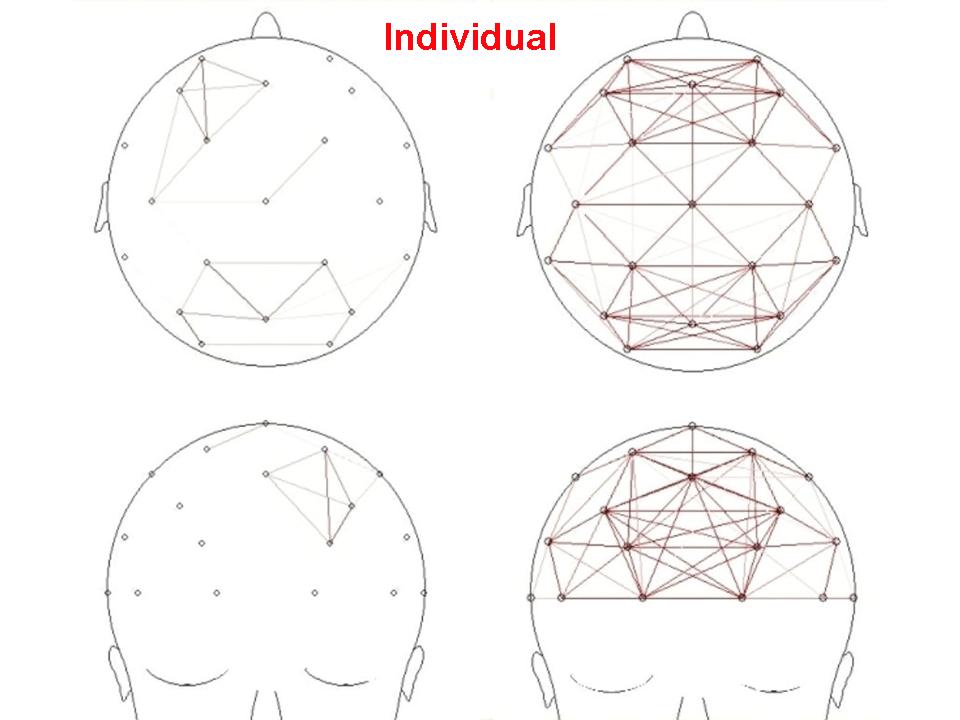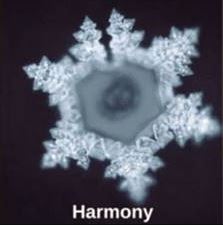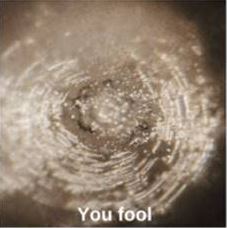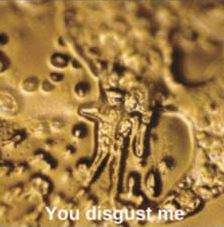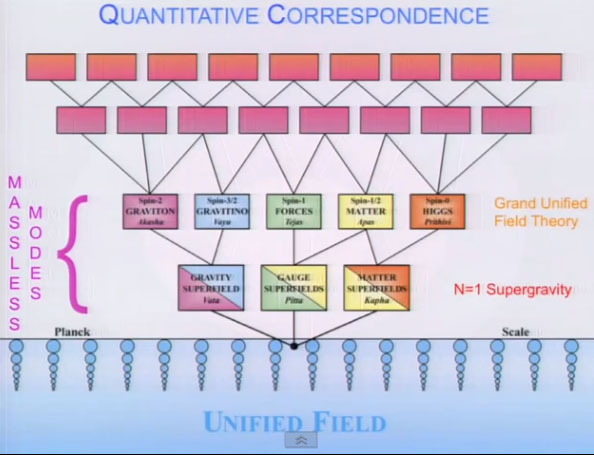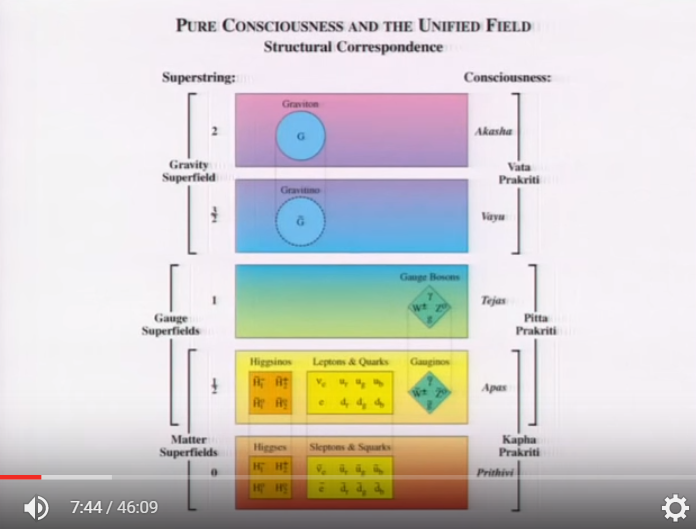From Physics to the Unified Field

“In the beginning, the Universe was created. This has made a lot of people very angry and has been widely regarded as a bad move.”
-Douglas Adams, Author of Hitchhiker’s Guide to the Galaxy
Everything is Energy
Let’s start with what you know. For millennia, mankind’s ideas about science and technology have been advancing to the point where scientists today now know some of the foundational truths about the Universe, all of which essentially boil down to one thing:
“Everything is energy, and that’s all there is to it. Match the frequency of the reality you want, and you cannot help but get that reality.” -Bashar, via Darryl Anka
Everything is energy. Seems simple enough, but let’s break it down further: What is ‘everything,’ and what is ‘energy’?
Let’s look first at the former: What is the Everything, aka, the Universe?
“There is the observable universe, which is everything whose existence we’ve thus far been able to confirm or observe, or could, in principle, observe if we pointed our telescopes at it. Then, there is the “The (Whole) Universe,” which is everything that exists, has existed, or will exist, anytime, anywhere, regardless of whether or not we’re aware of it yet.”
So, the Universe can be defined as everything, including whatever lies in the element of unknown that has not yet reached human understanding.
Minute Physics is an educational YouTube channel created by Henry Reich.

What is Energy?
SciShow is an educational YouTube channel created by Hank Green.
Now, for the latter: What is Energy? Energy is everything. As everything is the Universe, the Universe is energy. Forces, matter, time, and thoughts.
Physics is the branch of science that deals with the universe, or more precisely, the structure of matter and how the fundamental constituents of the universe interact. It studies objects ranging from the very small using quantum mechanics to the entire universe using general relativity.
Energy, in physics, is the capacity for doing work, and as long as there has been a universe, there has been energy. Energy is matter, and matter is energy. It may exist in potential, kinetic, thermal, electromagnetic, chemical, nuclear, mechanical, radiant, elastic, ionization, and gravitational forms.
“Energy can never be destroyed, and in the same way, it can never be created. It can only be transferred from one source to another… You could think of the universe as a constant flow of energy.”

Classical Physics
Classical physics has its origins in one form of energy in particular: The force of gravity. Since the seventeenth century, Sir Isaac Newton’s Law of Universal Gravitation, the theory that any particle of matter in the universe attracts any other with a force, has been applied to everything from falling apples to placing objects on the moon.
However, in the first half of the twentieth century, theoretical physicist Albert Einstein questioned not that two objects attracted one another through the force of gravity, but how those objects exerted that attractive force on one other. For a decade, Einstein searched for the mechanism by which objects exert this force of gravity and, in 1915, proposed his General Theory of Relativity: What we perceive as the force of gravity arises from the curvature of space and time. Space, itself, acts as that mechanism.
Theoretical physicist Brian Greene explains in an analogy: “Imagine you have a rubber sheet stretched in front of you, nice and taut. You take a marble and set it rolling on the surface, and it goes in a straight line. Easy to picture. Now, if you take a heavy object and put it in the middle of the sheet, the sheet will now curve. If I set that marble rolling, it won’t go in a straight line any longer, the marble will now roll in a curved trajectory because it’s rolling on this curved surface of the rubber sheet. Take that simple idea, and apply it to the Universe.”
In 1929, Edwin Hubble expanded on these ideas by examining the motion of various galaxies and confirmed the theories of Alexander Friedmann and Georges Lemaître that stated the Universe was indeed growing and that distant objects were moving away, as if the fabric of space-time were being stretched.
This knowledge gave way to the theory of the Big Bang, that the Universe began has a hot, dense, infinitesimally small nugget of energy and matter that expanded and cooled, forming, over billions of years, the Universe as it currently is. Scientists have since measured residual radiation in space that supports this origin theory.
Brian Greene is a theoretical physicist, Rhodes Scholar, and Professor of Physics and Mathematics at Columbia University.
Brush up on your Physics with Crash Course, created by John and Hank Green.

This explains how the Universe evolved after it started expanding outward, but what caused the Bang? What caused that outward push that pulled everything apart from the infinitesimally small point in the first place? Amplifying Einstein’s insight, Alan Guth and Andrei Linde, in association with Paul Steinhardt and Andreas Albrecht, put forth the Theory of Cosmic Inflation and the idea that gravity is not only a force of attraction, but also repulsion.
If there’s an energy suffusing space, an energy field per se, it can give rise to a repulsive gravity, an outward-pushing gravity that can cause the universe, in some sense, to fly apart. That burst of energy is what caused the Universe to bloom from the first small seed of intense energy, and further experimentation suggests that this Big Bang event was not a one-time thing and that there are entire other universes humans have yet to discover.

Quantum Mechanics
“All matter originates and exists only by virtue of a force which brings the particles of the atom to vibration. I must assume behind this force the existence of a conscious and intelligent mind. This mind is the matrix of all matter.”
-Max Planck, Founder of Quantum Theory
That, in a nutshell, is the human understanding of the cosmos at large, but while some researchers were stepping back to look at the big picture, others zoomed in, seeking to understand the smallest, most foundational building blocks that make up your massive universe.
Quantum mechanics is the area of physics that deals with the behavior of atoms and subatomic particles. Since the 1920’s, scientists have been examining smaller and smaller elemental particles, focusing first on atoms, then atomic nuclei, then nucleons (protons and neutrons), and now, elemental particles called quarks.
In an attempt to describe the characteristics and movements of these microscopic particles, Erwin Schrödinger formulated his wave equation because scientists like Louis de Broglie and Max Born suspected that matter has wave-like properties and proposed interpreting the wave function observed in experiments as a wave of probability. However, while attempting to measure these particles, researchers repeatedly observed phenomena they could not fully explain, such as quantum entanglement, superposition, and Heisenberg’s Uncertainty Principle.

Their research boiled down to this core idea: In quantum mechanics, if you know the quantum state of a particle, aka its wave function, you can use the Schrödinger Equation to calculate what that particle will do in the future… The problem is, in quantum mechanics, we never actually observe the wave function like this. Instead, when we measure it, we find the particle at a single point in space.
So, what is this elusive wave function?
This is where man’s observable universe ends and the (Whole) Universe begins. It must be concluded that, for some reason, humans do not see reality as it is, or at least, not in its entirety. Theoretical physicists have attempted to use current scientific understanding to theorize about what lies beyond that which humans have been able to observe.
But let us first ask another question: Why the mystery?

A False Reality
What would be the point of actual reality if it was so obscured from humans that we still have yet to discover it? Well, first of all, that’s a very human-centric way of looking at things. It would be helpful to start altering this perception of Mankind as the center of All That Is.
But honestly, why don’t you see reality as it is? And what, then, is the connection between your brain and your conscious experiences?
According to the Price Equation of Evolution, natural selection does not favor seeing reality as it is, but instead, favors only the fitness of an organism looking to survive.
Price Equation of Evolution
Evolutionary Fitness: The probability that the line of descent from an individual with a specific trait will not die out.

Cognitive scientist Donald Hoffman explains:
Organisms that see none of reality, but are just tuned to fitness, drive to extinction all the other organisms that perceive reality as it is. So, the bottom line is evolution does not favor accurate perceptions. Those perceptions of reality go extinct.
We do not see reality as it is. We are shaped with tricks and hacks that keep us alive. Evolution has given us an interface that hides reality and guides adaptive behavior. Space and time, as you perceive them right now, are your desktop. Physical objects are simply icons in that desktop.
We used to think that the Earth is flat because it looks that way. Then, we thought that the Earth is the unmoving center of reality because it looks that way. We were wrong. We had misinterpreted our perceptions. Now, we believe that spacetime and objects are the nature of reality as it is. The theory of evolution is telling us that once again, we’re wrong. We are misinterpreting the content of our perceptual experiences. There’s something that exists when you don’t look, but it’s not spacetime, and it’s not physical objects.
We’re blind to our own blindness. When I have a perceptual experience that I describe as a brain, or neurons, I am interacting with reality, but that reality is not brain or neurons, and it’s nothing like a brain or neurons. And that reality, whatever it is, is the real source of cause and effect in the world. Brains and neurons have no causal powers. They cause none of our perceptual experiences and none of our behavior. Brains and neurons are a species-specific set of symbols, a hack.
What does this mean for the mystery of consciousness? Well, it opens up new possibilities… Perhaps, reality is some vast, interacting network of conscious agents, simple and complex, that cause each other’s conscious experiences. Actually, this isn’t as crazy an idea as it seems, and scientists are currently exploring it.
Once we let go of our massively intuitive but massively false assumption about the nature of reality, it opens up new ways to think about life’s greatest mystery.
The theory of evolution presents us with the ultimate dare: Dare to recognize that perception is not about seeing truth, it’s about having kids.
Donald Hoffman is a Cognitive Psychologist and a professor in the Department of Cognitive Sciences at the University of California, Irvine, with joint appointments in the Department of Philosophy, the Department of Logic and Philosophy of Science, and the School of Computer Science. Hoffman received a Bachelor of Arts degree in Quantitative Psychology from the University of California at Los Angeles (UCLA) in 1978, and earned his Doctorate of Philosophy in Computational Psychology at the Massachusetts Institute of Technology (MIT) in 1983.

Unified Field Theory
With this evidence, it can be concluded that there are unknowns in the Universe which Man does not yet understand.
Is it possible there are entities who may have discovered these answers?
Statistics suggest that, in this universe alone, there exists billions of galaxies and trillions of stars. It is almost a certainty that life exists elsewhere in space. Your Universe is approximately 13.8 billion years old. Mankind, by the most generous estimates, is around 300,000 years old, and recorded history indicates civilization has only existed for 6,000 years. That means there has been approximately 13.8 billion years for someone else to have figured it out.
It is now estimated that for every grain of sand on Earth, there is an earth-like planet capable of sustaining life, and in 1961, astronomer and astrophysicist Dr. Frank Drake devised the Drake Equation, which calculates the number of worlds with intelligent life capable of technologically communicating with us. According to Drake’s own calculations, there are 10,000 communicative civilizations in the Milky Way Galaxy alone.
Decades later, the Drake Equation has been greatly expanded upon by Dr. Amir Aczel, associate professor of Mathematics and Statistics at Bentley College. His calculation extends to the visible universe as a whole, which has billions of galaxies, each containing billions of stars. He calculated that there is a 100% probability that advanced civilizations exist elsewhere.
But are there those here on Earth who have begun to figure out how to bridge these gaps – between known and unknown, observed and unobserved, and between All That Is and All That Could Be?
Furthermore, could the answers have been inside your minds all along?

John Hagelin, Ph.D, a renowned quantum physicist, explains the link between the most comprehensive theories of Unified Field Theory and Consciousness:
Is Consciousness the Ultimate Reality? Is it the Unified Field glimpsed today by Superstring Theory?
First, what do we mean by the Unified Field?
The Unified Field is the culmination of centuries of scientific investigation into the nature of reality. The chart summarizes everything we know about the Universe.
And, although the details may look complex, the overall structure is pretty simple. It shows the universe fundamentally unified and superficially diversified. Physics has been about exploring deeper and deeper levels of reality, and that inward exploration of the structure of physical reality began with hundreds of years of Newtonian physics, now referred to as Classical Physics, that explores the macroscopic sensory world of day-to-day perceptions.

However, that understanding wasn’t good enough to understand the workings of the atom. So, a whole new language, logic, and mathematics had to be developed to properly characterize and understand the behavior of atoms and molecules, and that is Quantum Mechanics.
Midway through the twentieth century, there was a complete reformulation of Quantum Mechanics to what is called Quantum Field Theory. It is yet a newer language of nature necessary to understand the world of elementary particles, more fundamental than atoms. They behave differently, partly because this is a relativistic world, a world of fast-moving particles close to the speed of light, and early Quantum Mechanics was not compatible with Einstein’s Relativity.
Quantum Field Theory is a beautiful theory, seemingly infinitely accurate as far as experiments can tell, and it sheds light on some of the puzzles of earlier quantum mechanics, particularly the relationship between particle and wave.
Dr. John Hagelin holds a B.A. in Physics from Dartmouth College, an M.A. in Physics from Harvard University, a Ph.D. in Physics from Harvard University, and conducted post-doctoral research at both CERN and SLAC.

“Unified Field Theory is an attempt to reconcile the infinite with the intimate mathematically. It is a type of field theory that allows all of the fundamental forces between elementary particles to be written in terms of a single field.”
– Dr. John Hagelin
A higher-level overview of these concepts can be viewed above, presented by Director David Lynch, Founder of the David Lynch Foundation for Consciousness-Based Education and World Peace.
Unfortunately, as you read earlier, quantum mechanics reached its limitations when it sought to explain the wave function underlying the movement of individual microscopic particles. Dr. Hagelin explains further:
The Theoretical Physics community has now advanced to a new field of focus known as Unified Quantum Field Theory, based initially on Supergravity Theory, and later, on Superstring Theory and M-Theory. These theories fulfill Einstein’s lifelong quest to discover the unified source of the diversified universe, the fountainhead of nature’s intelligence, and the origin of all of the streams of nature that govern the Universe at every level. Furthermore, the mathematics support these findings.
The Unified Field is an ocean of pure existence – of pure, abstract Intelligence at the basis of the Universe. This Universal Intelligence is not dead nor inert, but due to the Uncertainty Principle, it is teeming with unmanifest energy. It erupts and boils within itself and creates a foam of effervescent bubbles, like ginger ale. This is what is known as Dark Energy.
These small bubbles of energy are actually infinitesimal elastic loops called superstrings. Unlike particles, these rubberband-like loops vibrate within themselves, and when you count the different ways in which a rubberband can vibrate, you can see that these superstrings vibrate in nine material dimensions, plus one of time, giving these loops a lot of different ways to vibrate. When the math is applied and you calculate the different frequencies, you see that each vibrational state has a different energy, a different frequency, that represents a different tone. When you count those different tones or frequencies of this Universal Intelligence, those frequencies – those energies – correspond to the known particles of nature.
In the early days, we had the idea that there was a graviton, a field of gravity; there’s a photon, a particle of light; there are particles that have to do with the nuclear force and the radioactive force; and there are the particles like the electron and the quarks and the neutrinos and such. It was rather a hodge-podge, an arbitrary world, that of Quantum Field Theory.

Superstring Theory explains all those particles as the inevitable, predicted consequence of the Unified Field in its natural states of vibration, that the so-called material Universe isn’t material at all, just the vibrational tones – the natural reverberant frequencies – the music of the Absolute.
So, it is one theory, one Universal Field that supports different waves of vibration, like an ocean, supporting smaller waves and higher-frequency waves and slower, lazy waves representing different energies, different matter particles.
In a sense, it is extraordinary that one relatively simple concept of a quantum rubberband, or more precisely, a universal ocean of Intelligence that percolates rubberbands, explains the details of our Universe.
The picture is really more like this: You have this universal entity, this abstract, unmanifest, silent ocean, and waves of vibration rising from it that appear as the universe and all of the ingredients that we see in the universe. It is as if this entity were just striking the different tones of the Unified Field.
In addition to these superstrings that percolate from this ocean of pure Intelligence and Existence, the Unified Field also has the incredible capacity of percolating entire universes. These universes begin as baby universes – infinitesimal bubbles – but lots of them, like ginger ale: About 10^144 bubbles per cubic centimeter per second.
That’s a lot of baby universes, and most of them are duds. Most of them pop and disappear in a burst of energy, but under the right circumstances, some, like our own universe, start to grow exponentially. This is called Inflation. These universes then spawn galaxies, like our own Milky Way Galaxy and billions of others, and each galaxy, like our own, spawns hundreds of billions of suns, many – most – with planets, perhaps many of those planets teeming with life. This gives a taste of the immense Intelligence of the Universe and this universal ocean of Being, at the basis of it all, that governs not only Earth and its seven million mutually interacting species, but billions of planets in our own galaxy and billions of universes that probably, as of recent measurements, contain an infinite number of galaxies.

Consciousness
Now, what does this have to do with Consciousness, and how does it connect to our known science?
Dr. Hagelin explores this concept by referencing the knowledge shared in the Upanishads, philosophical texts that formed the foundation of Hinduism and some of humanity’s most detailed explorations into consciousness and its properties:
The concept of meditation sheds light on what Consciousness is. Meditation, as it is classically understood in the traditional yogic sense, was about leading the mind effortlessly within, taking the outwardly directed, active mind that perceives through the senses and turning that attention within to experience deeper and deeper levels of mind – quieter and quieter levels of the thinking process, slipping beyond thought altogether to experience pure Being, pure Consciousness, beyond thought, beyond sensation and the intellect and emotion. Pure, abstract, unbounded awareness.

According to the Yoga Sutras of Patanjali, a collection of Sanskrit aphorisms on the theory and practice of yoga, “Yoga is the complete settling of the activity of the mind. Then the seer is established in the Self.” Patanjali describes Consciousness as the Self, not the physical, material, or spiritual aspects with which a person would normally identify, but as the ‘seer within’ – the Consciousness, the unchanging, the immortal, the unbounded, the knower. We all have a ‘knower,’ or we wouldn’t be knowing.
This is known as Samadhi, the meditative state, described as a fourth state of Consciousness, after the conscious, preconscious, and unconscious.
“The peaceful, the blissful, the undivided thought to be the fourth; that is the Self. That is to be known.” – Nrisimha Tapaniya Upanishad 1
Samadhi, this meditative state, is not just a state of subjective experience. It has, in the brain, its corresponding, measurable correlates. At every level of the settling of the mind, the electrical activity of the brain, the firing of the neurons in the brain, looks completely different.
Going beyond thought completely, abstract awareness has its own completely unique style of brain functioning. The meditative state is characterized by both the frequency, which is Alpha1, and the uniform, synchronous firing across the total brain.
Gamma (above 30 Hz): High-level information processing, information-rich task processing.
Beta (above 12 Hz): Fast activity. Normal rhythm, problem solving, decision making, judgment, processing information.
Alpha (8-10 Hz): Calm activity. Mental resourcefulness, the bridge of consciousness and unconsciousness, alert but not actively processing information.
Theta (4 to 8 Hz): Slow activity, internal focus. Creativity, intuition, daydreaming, repository for memories, meditation, prayer, spiritual awareness. State between wakefulness and sleep; abnormal in awake adults but normal in children up to 13 years old.
Delta (0.1 to 3.5 Hz): Lowest frequencies. Deep sleep.

From a brain standpoint, this is amazing, because normally the brain is not so coherent. In waking consciousness, even sitting restfully with the eyes closed, if you look at the electrodes on the scalp (figure, left) as you measure the electrical activity of the brain in waking consciousness, there’s not a great deal of coherence or correlation between different parts of the brain. Some neighboring parts of the brain are talking to each other, but most of the brain is functioning in a rather asynchronous and chaotic way.
Looking at the same subject in the meditative state (figure, right), you see something that you don’t see in hypnosis, waking, dreaming, sleeping, or drug-induced states. You see the whole brain functioning in a completely synchronous, coherent way. That is one of the signatures of a new state of Consciousness, the fourth state of Consciousness: Samadhi.
Something very real and very different is happening. Something rather radical is going on in the meditative state, this state of Samadhi.

“If you want to find the secrets of the universe, think in terms of energy, frequency, and vibration.”
-Nikola Tesla, Engineer & Inventor
The key missing ingredient to most people’s understanding of the Great Unknown is the science of consciousness. Scientists have thought for a long time that the closer they could look at the operating mechanisms of the brain, the closer they would come to finding the location of consciousness. While there’s been fantastic work at mapping neural connections and understanding more and more about the brain and memory, what they’re finding is that they still don’t know where consciousness is.
Conducting groundbreaking research in the Princeton Engineering Anomalies Research Lab, inventor Adam Michael Curry and Princeton’s Dean of Engineering, Dr. Robert Jahn, studied the mysterious ordering effect of consciousness on quantum systems, an effect they called mind-matter interaction. What they have come to theorize is that consciousness is non-localized, meaning that consciousness does not seem to be strictly produced by the brain. It involves the brain, but there is something much deeper going on. They have found that consciousness may not be localized inside your body but may be a fundamental feature of the physical world in which you live.
The best way to understand nonlocality is to grasp that, in both physics and in consciousness, there is a connection that exists amongst all things, from photons, to people, to awareness, that isn’t limited by space and time but are woven within each other. Schrodinger theorized about nonlocality and entanglement in the 1920s, and in the 1970s, Stuart Freedman and John Clauser at Berkeley discovered that photons born together, like identical twins, can be positioned far apart from one another, but changing the polarization of one photon always changes the twin photon, no matter the distance. [D2]
“In this flow, mind and matter are not separate substances. Rather, they are different aspects of one whole and unbroken movement.”
–Dr. David Bohm, Physicist

“You can’t violate the laws of physics. It’s not like going through a stop sign. If you have a phenomenon, physics has to change to agree with your phenomena.”
-Russell Targ, Laser Physicist
Consciousness, the faculty of being sentient and awake, is not limited to your brainwaves or your body, but in fact, transcends the limits of space-time as an unbounded field of awareness. This is true whether you recognize it or not. Decades of laboratory studies continually demonstrate that human minds have a mysterious ordering effect on quantum-level phenomena.
One such experiment conducted by Adam Michael Curry and Dr. Jahn measured the effect of an individual’s thoughts on a random number generator (RNG). Essentially, what an RNG does is it looks at something intrinsically random in the physical world, typically a quantum process, and it converts those into a string of ones and zeros, like a coin flip. If you collect a large enough sample size, you find a 50-50 distribution of ones and zeros, meaning physical reality is behaving the way it should.
However, if you place an individual in front of a random number generator and you ask them to use their intention to mean shift the outputs to more ones or more zeros, there is oftentimes a significant mean shift that occurs in the direction of their intention. Curry remarked, “This is a very simple experiment, but the implications are profound. It suggests that, in fact, consciousness does not seem to be just an illusion or just a localized phenomenon, but that it does have some sort of capabilities to affect the probabilities at the deepest layer of reality, down in the basement layer of the quantum world, somehow.”
In another experiment by Curry and Dr. Jahn called ‘Plant RNG’, they constructed a room with no windows and placed inside it a single houseplant that required light to grow. In the ceiling, they placed a single growing lamp that could turn in one of four quadrants in the room, and to which quadrant that light shined was controlled by a random number generator. They placed the plant in one corner of the room and found that, although the light should have had an equal chance of shining in all four quadrants, it shined far more often in the corner with the houseplant than in the other quadrants, as though life itself bends probabilities in the physical world in the direction of its growth and evolution.
Clearly, somehow, this science of consciousness works with both machines and living things, but it can also affect the life-giving elements of our planet. Japanese scientist Dr. Masaru Emoto conducted research in which individuals placed their intent into water, then photographed the ice crystals that water produced when frozen. His experiments showed different crystallin structures that reflected the individual’s thoughts. If their intent was a negative emotion, the crystals would be dissonant and malformed, but if the intent was highly-ordered consciousness or love, the structures were beautiful and ordered like perfectly symmetrical snowflakes. Dr. Emoto’s experiments were repeated by other scientists whose research supported the finding that water has this crystalline component that is also tied into all matter and space in the universe through this consciousness force field. [D2]
The Global Consciousness Project tracks the effects of worldwide events on the collective consciousness with over 70 RNGs worldwide. Evidence suggests the existence of a noosphere, connecting the human population the world over.
Dr. Emoto’s crystalline water experiments.

Quantitative Correspondence
“Long ago, [Man] recognized that all perceptible matter comes from a primary substance, of a tenuity beyond conception and filling all space – the Akasha or luminiferous ether – which is acted upon by the life-giving Prana or creative force, calling into existence, in never ending cycles, all things and phenomena.”
-Nikola Tesla, 1930
So, what is the relationship between that inner experience of unbounded awareness when the mind is temporarily left behind, between that field of intelligence within, and the intelligence at the basis of the Universe? Between Atman, our Self, and Brahman, the unified force of the entire Universe?
A physicist may at first say, “Forget it. How could there be a relationship? Consciousness is purely subjective, and science is purely objective.”
Dr. Haglin explains that this relationship exists because Quantum Field Theory and the Unified Field are nonmaterial realities. There is not a material Source of the material Universe. There is a nonmaterial Source of pure potential and pure Intelligence.
And intelligence is a perfectly fair word because the deeper you go into nature and the more you explore the laws of nature, the more concentrated the intelligence becomes. The very simple mathematical formula that describes the structure and functioning of Unity contains within that compact form all of the intelligence and all of the laws of governing nature and life at every level.
The Unified Field is the most concentrated field of dynamic intelligence in nature. Dynamic intelligence is Consciousness.

To break this down, we have a Unified Field, but we also have its structure of vibrations and its calculable frequencies. These fundamental frequencies, the natural, reverberant tones of the unified field, are the elementary particles and forces of nature. That’s all they are. Just the fundamental, reverberant frequencies of Unity.
We know what they are: Spin-2 graviton responsible for gravity, spin-3/2 gravitino, spin-1 forces like electromagnetism, spin-½ particles like electrons and quarks, spin-0 Higgs. All of these different vibrational tones of the unified field are well-mapped and well-known, as well as calculable.
But what about consciousness?
What emerges from the abstract field of consciousness is thought, physiology, and matter. When the awareness settles in, the former dissolves into pure being. By becoming familiar with the process of emergence and submergence into and out of the meditative state, individuals become familiar with the fundamental tones, these vibrations or waves of consciousness rising from pure silence into activity. You can enumerate those waves – the fundamental frequencies of consciousness.
Within both the Self and Superstring Theory, there is an emergence from Unity of a 3-in-1 structure of entities and their relationships which, along with their five emerging elements, form 8 separate entities total, which correspond perfectly with one another between Natural Science and the Science of Consciousness (figures).
In physics, you have the five spin-types, the five fundamental categories of matter and energy responsible for the universe that are related to each other in three doublets that form three superfields.
These five fundamental elements are also fundamental in the science of consciousness.
The Yoga Sutras of Patanjali are about experiencing the ocean of pure existence and then stimulating that ocean into waves of vibration and experiencing the fundamental building blocks of mind and creation. These five elements of life, Akasha (space), Vayu (wind), Tejas (fire), Apas (water,) and Prithvi (earth), are bound together in exactly the same pairings, and only the same pairings, into three Prakritis (material energy) that correspond to the superfields of Superstring Theory, both of which make up the fundamental ingredients of the Universe.

The similarities are not just numerical, but there exists a deeper correlation between these elements. For example, gravity is the manifestation of the curvature of space, which is not just nothing, but a relativistic fluid that curves and flows, and Akasha is also space, not as nothing, but space as subtle substance, space as relativistic fluid. The similarities extend to all five of the elements.
When modern scientists hear about the five elements, the typical response is, “How quaint. How delightfully primitive.” But after all these years of scientific exploration, scientists are back to the fundamental five elements, and they are the same five elements that emerged in teachings thousands of years ago.
Regarding the corresponding vibrational expressions between consciousness into matter (conscious experience) and the expression of the unified field into matter (modern physics), the likelihood that this correspondence is a statistical fluke is approximately 1 in 1000 (0.1%).
In addition to the expressions of the unified field in creation, we can also look at the unified field before the Big Bang because, according to Superstring Theory, the unified field was not created in the Big Bang, it created the Big Bang. It was there before. Long before the universe, the unified field was contentedly sitting within itself, not dead or lifeless or inert, but pure life reverberating within itself. Furthermore, there is an 8-in-64 dimensional structure to both superstrings and pure consciousness, and the human nervous system is as if hardwired or engineered to reverberate in that structure of totality creating a gateway to consciousness. The similarities are extraordinary.

Through both the telescope and the microscope, scientists have established a link between mankind’s scientific understanding of the Universe and Consciousness, on both a grand scale and an individual level.
The bleeding edge of modern physics has theorized the existence of a great Intelligence as the Unified Field – the Source behind All That Is, as well as creation that can be performed inside every mind. But how is one to understand this Intelligence more fully?
Fortunately, a new type of research has recently revealed these answers, but for this, you must descend to a deeper level of understanding than can be provided by quarks or neutrinos. It is a journey through the brain and into the mind where lies at the core of every consciousness, science has discovered, a Soul.
Fair Use Notice
This platform may contain copyrighted material the use of which has not always been specifically authorized by the copyright owner. We are making such material available in our efforts to advance understanding of environmental, political, human rights, economic, democracy, scientific, and social justice issues, etc. We believe this constitutes a ‘fair use’ of any such copyrighted material as provided for in section 107 of the US Copyright Law. In accordance with Title 17 USC Section 107, the material on this site is distributed without profit to those who have expressed a prior interest in receiving the included information for research and educational purposes.


